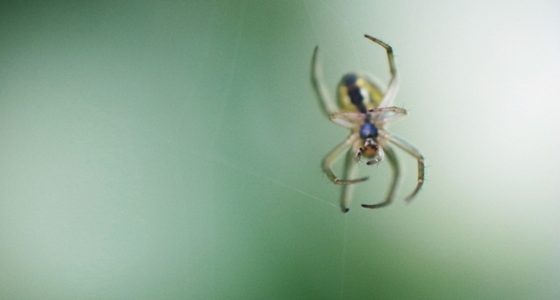
In the spring and summer, spiders can present a number of headaches for building managers. These pests become more active as the weather improves and can create a unique set of problems for your building.
Spiders on their own are rarely problematic. In the Northeast, venomous spiders like the black widow or the brown recluse aren't major concerns. Most spiders don't carry the diseases that some pest birds or rodents have. And these arachnids actually can cut down on the total number of pests in your building by eating peskier insects.
While spiders may have some relative benefits over other pests, they have one major difference – their webs.

Avoiding massive webs
In 2009, the Back River Wastewater Treatment Plant in Baltimore, Maryland, experienced a severe spider problem. Nearly all four acres of the semi-enclosed structure were covered in spider webs, with an estimated 105 million spiders there in total. The facility managers called in experts to document and manage the building because the webs were affecting aspects of the structure.
While most urban office buildings aren't at risk to the same levels of spider invasion as a semi-enclosed water treatment facility, their webs can present similarly frustrating problems. Spiders can leave small or sprawling webs on the exterior or interior of a building. These webs are unsightly, foster the population of more spiders, and can lead to more staining and other aesthetic damage.
Contact Clean and Polish Building Solutions to eliminate spider webs and stop them from getting out of control, whether they're on the corners of your building's facade or the 28th-story windows. Clean and Polish uses environmentally sensitive and building-safe cleaning products that are specifically designed to get rid of spider webs and inhibit their ability to spin more.
"Contact Clean and Polish Building Solutions to eliminate spider webs."
High rise spiders
When most people think about a skyscraper, they think of clean metal and glass, but as Chicagoist explained, spiders are drawn to nearly any floor of these large buildings. By either climbing or using updrafts to "balloon" up the side of the building they get high enough to spin webs and pollute tenants' views all over the building. The news source pointed to problems in Chicago at the Hilton, the Willis Tower and the John Hancock Center where spiders climb as high as 95 stories to build their webs.
While not dangerous, most tenants don't want to see or deal with these spiders at all. In addition to having your exterior cleaned regularly during the season to get rid of these pests, consider installing a customized integrated pest management system.


